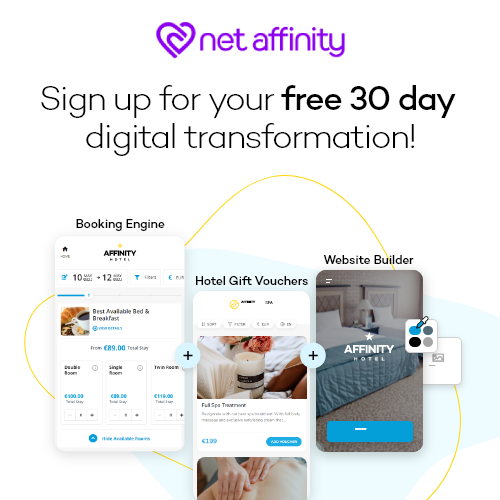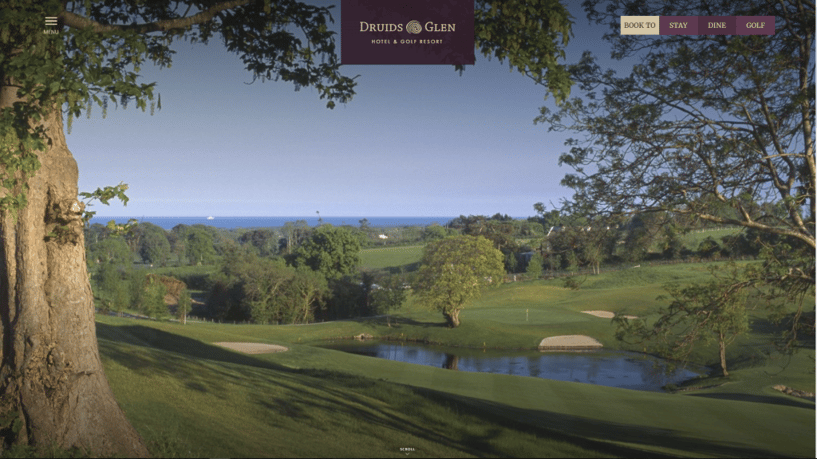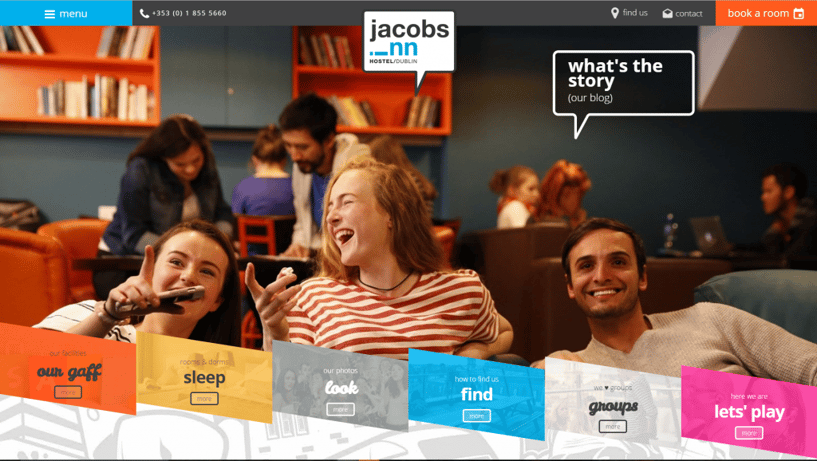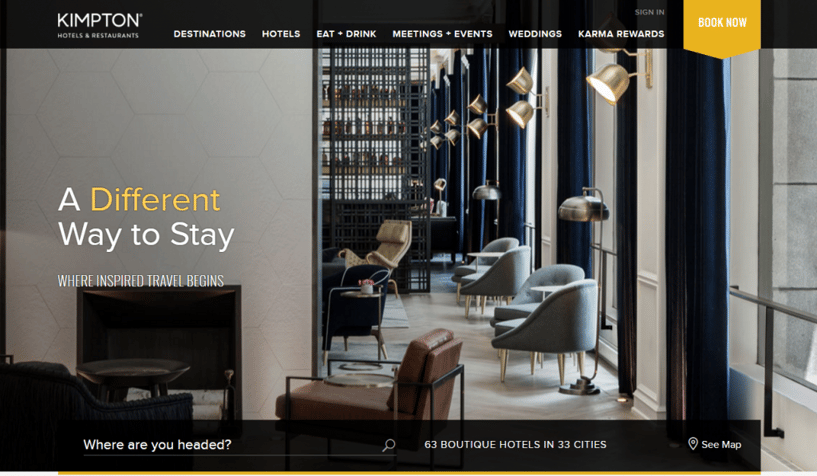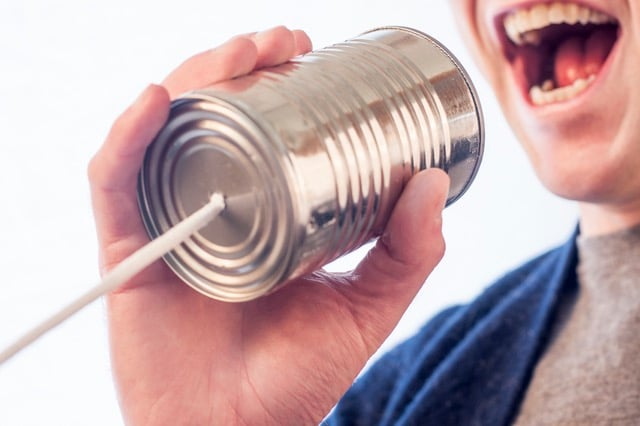Brand marketing is one of the most beneficial types of marketing your hotel can use. To the public, your hotel’s brand is your hotel’s identity. A strong brand is vital for encouraging direct bookings, along with dozens of other benefits. We’ll give you three useful tips and tricks for building your hotel’s brand.
Good branding means that, when a potential guest hears the name of your hotel, that name instantly conjures up that guest’s perceptions and experiences of your hotel.
When you think of Marriott, for example, what do you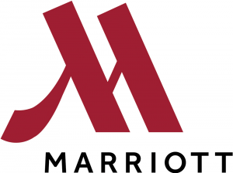 think of? You probably think of that red M, a property you might have stayed in, and maybe their rewards program. You have these associations because they’re an internationally recognized brand that you’ve come into some form of contact with.
think of? You probably think of that red M, a property you might have stayed in, and maybe their rewards program. You have these associations because they’re an internationally recognized brand that you’ve come into some form of contact with.
When your brand is recognized, guests are more likely to book your hotel – and book it directly – over an unknown.
Branding allows you to drive more direct bookings, compete more strongly against competitors on OTAs, and take control of your message and your online presence.
We’ll be covering 3 tips and tricks to build your hotel’s brand:
- Creating a strong visual brand identity
- Bidding on your own brand terms
- Embracing word-of-mouth
Why is Branding So Important?
Branding creates a kind of shorthand for your hotel in a customer’s mind. They don’t have to do the kind of research they would for an unknown hotel, because they already know your reputation, have a general idea of what you offer, know whether guests see you positively or negatively, and much more.
This notoriety can prompt guests, when given a choice between your hotel and one they don’t recognize, to automatically choose you.
Think of it as making your hotel a recognizable, friendly face in the crowd.
Branding also influences repeat business, as “a customer’s perception of a brand is going to be largely informed by their previous experiences with that brand.”
For example, a traveler seeing a Best Western immediately knows what kind of rooms and service they’ll find inside. Your goal is to generate a similar level of recognition among your customer base and likely new guests.
Most independent hotels don’t have the advertising dollars of a Hilton, a Radisson or a Hyatt. However, that doesn’t mean they can’t claim their brand.
Brand recognition for small and medium sized independent properties can lend a significant competitive edge, especially in the highly competitive hospitality world.
Even without the budget of an international chain, there are a few tips and tricks that independent hotels can make use of.
Here’s what we recommend, along with a look at the specific benefits of branding.
Tips and Tricks for Branding Your Independent Hotel
Before we dive in, remember that knowing your audience is key to all branding activities. You must know who your hotel appeals to, and know what that audience wants and needs. All your branding should keep your ideal audience at the forefront.
With that in mind, here are our 3 tips for building your hotel’s brand.
1. You need a strong visual brand identity
Your brand identity should carry from your logo right down to your stationary, online ads and other branded material. Without the visuals backing you up, you’ll have a very difficult time building your brand.
Your visuals should reflect your hotel. Do you want guests to see you as a formal, luxury property? A colourful, casual hostel? An elegant country house? Choose fonts, colours, and language to reflect your nature.
Here’s a few examples of hotels with a strong visual identity on their websites:
Druid’s Glen Hotel and Golf Resort:
From the first screen on their homepage, you see:
- Their brand colours and logo
- That they’re a resort property with extensive grounds
- A luxury golf course with great views
- A welcoming look and feel
Jacobs Inn Hostel
From this, it’s easy to understand that Jacobs Inn is:
- A youth-focused hostel
- Casual and colourful
- Dedicated to fun, with the feel of a property in a city (the funky graffiti patterning on the bottom of the screen, combined with the colours and unusual layout)
Kimpton Hotels and Restaurants
Kimpton is an upper-midscale independent set of properties – from this screen on their homepage, you can see:
- Their brand colours (black and white, with 3 or 4 bright complimentary colours they use depending on the context)
- That they’re a set of boutique properties (63 in 33 cities)
- From the language, they’re focusing on marking themselves as unique and catering to the traveler who wants to be ‘inspired’
Beyond these specifics, each property has a unique ‘feel’ created by the colours, the language and the design. This ‘feel’ should be replicated across their printed and online materials, from Facebook ads to their Trivago listing to the stationary in their rooms.
For an in depth look at what to consider, here’s 20 tips to build your visual identity.
2. Bid on Your Brand
There’s a lot to be said for branded pay-per-click (PPC) campaigns on Google AdWords and other search engines.
When you bid on your brand terms, you protect your brand, generate quality traffic, and take ownership of key search results.
Brand campaigns are typically dirt-cheap compared to other paid search campaigns, so there’s no reason to hold back.
Benefits of Branded PPC Campaigns
You protect your brand by ensuring that your official hotel website is the first result when your hotel is searched for. You don’t want guests seeing Booking.com, Expedia or any other OTA above your direct channel.
1. Your OTA partners are assuredly bidding on your brand keywords – don’t let them have all the valuable clicks! Bidding on brand terms prevents OTAs from taking up all the ad slots for your hotel’s brand before guests have the chance to see a single organic result for your own website.
It’s also possible – even likely – that your top competitors are bidding on your brand terms. There are tricks of search advertising that allow them to do this. By bidding on your own brand term with high-quality ads, you can push their ads down the ranks.
2. Secondly, brand campaigns generate quality traffic. Google reports that clicks from branded searches have double the conversion rate of clicks from non-branded searches. Studies have shown rates of up to 5 times that of organic conversion rates.
SearchEngineLand points out that people searching for your brand terms are probably already somewhat familiar with your hotel, making them further down the purchase funnel than someone searching “hotels Las Vegas.”
3. In terms of taking ownership, SearchEngineLand points out that an ad on branded keywords means you can control the landing page you send users to. That means you can guide people to your homepage, your wedding page, or wherever you like, instead of letting them go to non-relevant landing pages.
When you can tell guests about your ‘best rate guaranteed’ and your amenities through search ads, you’re taking control of your message. This is more efficient than growing it through SEO alone.
You don’t want your competitors and third parties showing up for your brand terms – so take control!
3. Word of Mouth
Word of mouth is a broad category. Today, it means more than someone mentioning you to a friend. It covers your presence on review sites, previous guests recommending you offline and on social media, user generated content, and more.
We’ve written about user generated content and reviews before, so today we’ll take a slightly broader perspective.
Word of mouth has been called ‘the most valuable form of marketing’ because it tends to be trusted over every other form. People believe other people over brands, which makes sense.
So how do you, the brand, take advantage of that?
The key is to encourage happy guests to spread the word about your hotel’s brand far and wide. Empower them by giving them “different ways to talk and share” (Forbes). This might be simple reviews, photos, or something more creative, like creating an ‘Instagram space’ in your hotel lobby or on the grounds for guests to take advantage of.
You can encourage them to leave a review by requesting one via email a few days after a stay, or by leaving a card in their room.
You should also encourage the sharing of testimonials and pictures on social media.
Try encouraging your guests to talk about you by offering a prize in a competition. Maybe sharing a photo from your hotel on Instagram or Twitter (with your brand hashtag, of course) gets them entered in a competition for a free stay. Here are a few best practices for running a social media competition.
When you encourage word of mouth sharing, whether it’s reviews or photos, from your guests, use it to promote your brand. If it’s on social media, create hashtags for guests and you to use. Place reviews on your own website, so guests don’t have to search for them on third party sites.
Monitoring Your Brand
When you’re spending time and money on building your brand, it’s natural to want to keep track of how you’re doing.
While the most important KPI will always be the number of rooms you’re filling, there are a few tools and resources to give you an idea of how your brand is perceived online.
Tools to Measure Brand Awareness
First, social listening tools. Social Mention is probably the most popular free social listening tool. It allows you to set up alerts so you’re notified any time someone mentions your brand. You can measure how much you’re talked about and general sentiment (positive, negative or neutral), along with reach.
Importantly, you can also respond to users who might not have ‘tagged’ your brand in the conversation. This is particularly key to responding to any negative comments that you might otherwise miss.
There are more tools out there, and they all focus on slightly different things. Shop around to find which suits your hotel’s needs best.
Secondly, look at your reviews. Make sure you keep an eye on reviews on each platform your own: your own site, review sites like TripAdvisor and Yelp, and third party sites you’re selling inventory on (like Booking.com).
That’s not easy when you’ve got limited resources! Using software like ReviewPro makes the job easier. They aggregate and monitor reviews for you, including sentiment analysis and other useful analytics. Be certain to respond to as many of your reviews as you can, especially negative ones. Be positive and productive, and you can change the opinion of someone reading that review from a ‘no’ to a ‘book now’.
Lastly, you can survey guests before or after their stay to find out how they heard about you. This is often a great way to understand which outreach methods are actually getting you heads in beds. Make sure to keep the survey short and sweet to increase the odds of guests filling it out!
Conclusion
These are just a few of the tips and tricks you can take advantage of when you’re growing brand awareness. However, you should keep in mind that a brand is only as high-quality as the business. Your hotel should, above all, strive to deliver quality from the first click on your website to guest check out.
When you’ve got the quality and you know your audience, your branding activities become a thousand times more profitable.
Along with focusing on visuals, paid campaigns and word of mouth, you should ensure you stay active and engaged on social media, and make sure your employees are also reflecting your brand. Here’s a quick look at 4 other factors in building a brand.
How many of these tips and tricks are you using to build your hotel’s brand? What have you seen success with?
Words by Tayor Smariga
